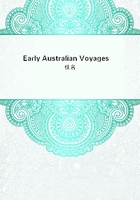
第25章
On April 12th, in the latitude of 3 degrees 45 minutes south, and in the longitude of 167 degrees, we found the variation 10 degrees towards the east. That night part of the crew were wakened out of their sleep by an earthquake. They immediately ran upon deck, supposing that the ship had struck. On heaving the lead, however, there was no bottom to be found. We had afterwards several shocks, but none of them so violent as the first. We had then doubled the Struis Hoek, and were at that time in the Bay of Good Hope. On the 14th, in the latitude of 5 degrees 27 minutes south, and in the longitude of 166 degrees 57 minutes, we observed the variation to be 9 degrees 15 minutes to the east. The land lay then north-east, east-north-east, and again south-south-west, so that we imagined there had been a passage between those two points; but we were soon convinced of our mistake, and that it was all one coast, so that we were obliged to double the West Cape and to continue creeping along shore, and were much hindered in our passage by calms. This description agrees very well with that of Schovten and Le Maire, so that probably they had now sight again of the coast of New Guinea.
It is very probable, from the accident that happened to Captain Tasman, and which also happened to others upon that coast, and from the burning mountains that will be hereafter mentioned, that this country is very subject to earthquakes, and if so, without doubt it abounds with metals and minerals, of which we have also another proof from a point in which all these writers agree, viz., that the people they saw had rings on their noses and ears, though none of them tell us of what metal these rings were made, which Le Maire might easily have done, since he carried off a man from one of the islands whose name was Moses, from whom he learned that almost every nation on this coast speaks a different language.